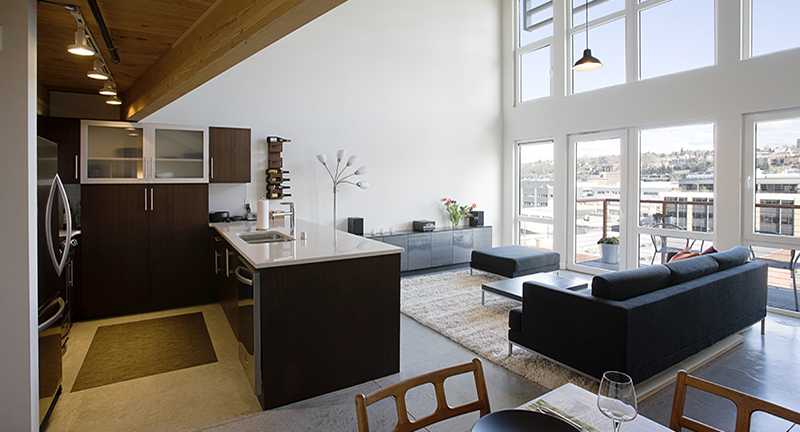Smart Home Designs for the Tech-Savvy Homeowner
Table of Contents
- Introduction
- Understanding Smart Home Design
- Planning for Automation: The Foundation of a Smart Home
- Design Integration: Making Technology Invisible
- Room-by-Room Approach to Smart Design
- Sustainability Through Smart Design
- Security and Access Control
- Scalability and Future-Proofing
- User Experience and Simplicity
- Challenges and Considerations
- The Role of the Architect in Smart Home Design
- Collaborating with Hothico Architects
- Final Thoughts
The idea of home has evolved rapidly in recent years. No longer just a physical space for shelter, modern homes are becoming interactive environments tailored to our habits, routines, and comfort. For the tech-savvy homeowner, this shift means integrating technology seamlessly into architecture and design. At Hothico Architects, we understand that smart home design is not just about gadgets; it’s about how architecture adapts to the digital lifestyle of the modern resident.
This blog explores smart home design principles, practical implementation, and how homeowners can collaborate with architects like us to create spaces that are intuitive, responsive, and aligned with today’s digital habits.
Understanding Smart Home Design
Smart home design refers to the architectural and interior design approach that supports integration of technology for automation, efficiency, security, and convenience. This doesn’t just include installing smart speakers or lightbulbs — it’s about designing spaces that support these systems holistically.
At Hothico Architects, we start with questions like:
How do you use each space daily?
What systems do you want to control remotely?
What security features matter most?
Where can energy efficiency be optimized?
The answers help us create layouts, lighting plans, material choices, and MEP (Mechanical, Electrical, Plumbing) considerations that enable smart systems to function flawlessly.
Planning for Automation: The Foundation of a Smart Home
Automation is the backbone of a smart home. This includes:
Lighting Control: Automated lighting systems that adjust based on time, activity, or ambient light.
HVAC Systems: Smart thermostats and climate control that learn your behavior and adjust accordingly.
Security Systems: Cameras, motion sensors, and smart locks that can be managed from a mobile app.
Shading and Curtains: Automated blinds that react to sunlight and time of day.
Voice & App Control: Integration with platforms like Alexa, Google Home, or Apple HomeKit.
The planning for these systems begins early. Wiring, control panels, and device placement need to be mapped out before construction or renovation starts. Hothico Architects often collaborates with system integrators at the planning stage, ensuring your infrastructure is future-ready.
Design Integration: Making Technology Invisible
One of the main concerns of tech-savvy homeowners is ensuring that technology doesn’t interfere with the visual aesthetics or atmosphere of the home. Smart home design aims to make technology invisible — functional without being intrusive.
At Hothico Architects, we integrate devices discreetly:
Sensors are flush-mounted within ceilings or behind wall panels.
Speakers are embedded in ceilings or behind acoustic panels.
Smart mirrors serve dual purpose — functional and digital.
Charging stations and hubs are built into furniture or cabinetry.
This method of integration ensures the house doesn’t look like a control room but maintains a clean, modern design with functionality built in.
Room-by-Room Approach to Smart Design
Let’s explore how a smart home can be designed room by room.
1. Living Room
This is where automation often starts. You can automate lighting scenes for movies, reading, or hosting guests. Smart TV systems, integrated audio, and motorized blinds all contribute to a seamless experience. Motion sensors can detect presence and adjust lights and temperature automatically.
2. Kitchen
A tech-friendly kitchen includes smart appliances, voice-controlled lighting, and faucets that respond to motion or preset temperatures. The layout can include docking stations, wireless chargers, and integrated displays to show recipes or groceries.
3. Bedroom
In the bedroom, comfort and control are key. Automated blinds that close as you prepare for bed, smart lighting that dims gradually, and temperature control that aligns with sleep patterns are all part of the smart bedroom experience.
4. Bathroom
Smart mirrors with built-in displays, temperature-regulated showers, and automatic exhaust fans with humidity sensors help create a more responsive bathroom environment. Lighting scenes can adjust from bright and energizing in the morning to calm and warm at night.
5. Home Office
A well-designed smart office ensures productivity and comfort. Automation includes smart lighting that adjusts with the time of day, occupancy sensors, and integration with video conferencing tools. Power management systems ensure devices are protected and charged.
6. Outdoor Spaces
Smart irrigation, lighting, security, and entertainment systems can be integrated into outdoor zones as well. Sensors can control garden watering schedules based on weather data, and lights can turn on when someone approaches the driveway.
Sustainability Through Smart Design
Energy management is one of the most practical benefits of smart home design. From Hothico Architects’ point of view, sustainability starts with passive design principles and is enhanced through smart technology.
Some sustainable smart features include:
Solar Panels and Smart Inverters: These systems feed energy back to the grid and are managed through smart dashboards.
Energy Monitoring: Real-time data on power consumption helps homeowners reduce waste.
Smart Appliances: These operate more efficiently, often scheduling energy-heavy tasks during off-peak hours.
Automated Climate Control: Learning algorithms optimize heating and cooling, based on time of day and occupancy.
By aligning sustainable architecture with smart systems, we help homeowners reduce operational costs and environmental impact without sacrificing comfort.
Security and Access Control
Homeowners prioritize safety, and technology offers several smart options. We incorporate security systems that blend into the architecture.
Smart Locks: Keyless entry systems that can be managed remotely.
CCTV with Remote Access: Real-time viewing from mobile devices.
Intercom Systems: Video doorbells and internal communication tools.
Perimeter Sensors: For alerts and automated lighting when motion is detected outside the home.
Designing for security means considering sightlines, access points, and power redundancies to ensure systems are always operational.
Scalability and Future-Proofing
One of the key architectural considerations is scalability. A smart home should be able to grow with future technologies. At Hothico Architects, we ensure homes are built with:
Conduit paths for easy wiring updates.
Modular systems that allow for easy integration of new devices.
Flexible room functions — such as turning a media room into a home office or vice versa — with adaptable smart infrastructure.
This future-ready approach means you’re not locked into outdated systems and can evolve your space as needed.
User Experience and Simplicity
Smart homes often fail when the systems are too complicated. Our goal is to create intuitive experiences. This involves:
Centralized control panels with simple interfaces.
Consistency across all systems — using one app or dashboard wherever possible.
Backup systems that allow manual control in case of failure.
Voice commands for hands-free convenience.
We guide our clients through choosing systems that are easy to manage for all users in the household, regardless of their tech proficiency.
Challenges and Considerations
Though the benefits are clear, there are challenges in designing smart homes:
Cost Management: Smart systems can get expensive. Prioritization is key.
Privacy Concerns: Data collected by smart systems needs to be protected.
Compatibility Issues: Not all devices talk to each other.
Maintenance and Updates: Like software, smart systems need regular updates.
Hothico Architects works closely with system integrators and tech partners to ensure reliability, privacy, and functionality — all while staying within budget and timeline.
The Role of the Architect in Smart Home Design
While smart home technology is driven by brands and manufacturers, its success depends largely on architectural planning. As architects, we consider:
Placement of tech infrastructure.
Aesthetic integration into the design language.
Ensuring spatial functionality aligns with smart systems.
Balancing technology with comfort and sustainability.
By involving us early, homeowners avoid retrofitting problems and gain a home that’s designed around their lifestyle and not just the devices.
Collaborating with Hothico Architects
For homeowners interested in creating or upgrading to a smart home, here’s how collaboration with Hothico Architects works:
Discovery Meeting: Understand your habits, preferences, and budget.
Concept Design: We create layouts with smart tech in mind.
System Mapping: Work with tech integrators to plan automation systems.
Design Detailing: Integrate devices into furniture, lighting, HVAC, and MEP.
Execution: Coordinate with builders and technicians to install and test systems.
Handover and Training: Ensure you’re comfortable using all systems.
Whether building a new home or renovating an existing one, we ensure smart design is thoughtful, not overwhelming.
Final Thoughts
Smart home design is no longer an afterthought — it’s a foundational part of modern architecture. For the tech-savvy homeowner, it offers control, comfort, efficiency, and security in ways that traditional homes cannot. But to make it work well, design must come first.
At Hothico Architects, we believe that technology should adapt to your lifestyle, not the other way around. Our approach ensures smart systems are seamlessly integrated into your home, enhancing everyday life without compromising the quality of your space.




